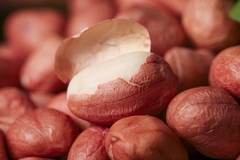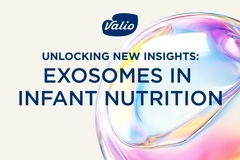Interplay between caloric restriction and signaling proteins crucial to heart health, study finds
11 Apr 2024 --- A team of Chinese researchers conducted a thorough literature review on the mechanisms through which caloric restriction (CR) improves cardiovascular health. They specifically examined the interaction between CR and sirtuins, which can lead to innovative treatments for this pervasive health condition.
Calorie restriction is a dietary regimen that reduces the energy intake from foods and beverages without causing malnutrition. The CR approach is being considered more comprehensively in the prevention of cardiovascular diseases (CVD) and, in many cases, can extend a patient’s life or reduce age-related disease risk.
“In experimental studies using murine models, the sirtuins, notably SIRT1, have been shown to mediate the beneficial effects of CR on diverse CVDs, including diabetic cardiomyopathy, myocardial ischemia-reperfusion injury, myocardial fibrosis, atherosclerosis and abdominal aortic aneurysm. The increase in SIRT1 is attributed to elevated intracellular NAD+ levels that are induced by CR,” explains Dr. Depei Liu, professor and director of the State Key Laboratory of Medical Molecular Biology, China.
The researchers recommend that future research use advanced methodologies like single-cell sequencing, high-throughput technologies and machine-learning models to understand the complex interplay better. The insights could pave the way for developing novel therapeutic strategies to prevent and treat CVDs.

Signaling proteins
The researchers are from the Department of Biochemistry and Molecular Biology at the State Key Laboratory of Common Mechanism Research for Major Diseases, the Institute of Basic Medical Sciences for the Chinese Academy of Medical Sciences and Peking Union Medical College and is published in the Chinese Medical Journal.
The researchers are convinced that the health benefits of CR are mediated by sirtuins, a family of nicotinamide adenine dinucleotide (NAD+)-dependent signaling proteins. These proteins play a role in various cellular functions, including the regulation of metabolism, DNA repair and gene expression.
The review shows that seven sirtuins mediate the cardiovascular benefits of CR based on their location. These include SIRT1, SIRT6 and SIRT7, located in the cell’s nucleus and regulate gene expression. SIRT3, SIRT4 and SIRT5 are present in the mitochondria, where they maintain mitochondrial function and mitigate oxidative stress. SIRT2 is located in the cytoplasm of the cell and is involved in DNA repair and apoptosis, a type of programmed cell death.
The intricate interplay between gasotransmitters, ncRNAs and small-molecule metabolites and their interactions with sirtuins makes the multifaceted mechanisms underlying the cardiovascular benefits associated with CR clearer. These circulating molecules participate in physiological and pathological processes in the cardiovascular system. They modulate the expression and activity of sirtuins, mediating the beneficial effects of CR on cardiovascular health. The researchers recommend single-cell sequencing, high-throughput technologies and machine-learning models to conduct future research about CR’s impact on CVDs.
The researchers recommend single-cell sequencing, high-throughput technologies and machine-learning models to conduct future research about CR’s impact on CVDs.
Liu notes: “Existing studies on sirtuins and CR merely represent the tip of the iceberg. The evidence supporting sirtuins as a sensor or mediator of CR remains insufficient. The distinct functions of each molecule within the family have not been clearly analyzed. Moreover, the conclusions drawn from mouse experiments remain unclear, and further experiments in primates are yet to be conducted.”
In Europe, the cost of cardiovascular diseases on health care expenses is estimated at €282 billion (US$305 billion) from data collected and processed in 2021. The European Society of Cardiology presented the information last year in collaboration with the University of Oxford.
CVD effects
CVDs affecting the heart and blood vessels are a global health concern and are known to claim millions of lives annually. In China, an estimated 330 million people are affected by CVDs, making it the leading cause of mortality in both urban and rural populations.
The researchers found that in various mouse models, CR increases the expression of the sirtuin proteins, improving both vascular and heart health and even preventing tumor formation. CR has demonstrated reductions in blood pressure and inflammation, alleviates oxidative stress and enhances endothelial function.
Studies where individuals were assigned to a 25% CR diet for six months demonstrated a reduction in cholesterol levels and blood pressure, both of which are risk factors for CVDs. Reducing fat levels is attributed to a change in energy metabolism brought about by CR, in which enhanced use of stored fat in cardiac tissues is preferred as an energy source.
The researchers noted that CR promotes hydrogen sulfide production, which, in turn, enhances sirtuin activity. CR also reverses alterations that occur in non-coding RNAs (ncRNAs) due to aging. These ncRNAs directly target sirtuins and regulate their function.
The accumulation of plaque in the arteries or thickening of arterial walls can cause CVDs. CR improves vascular health by promoting the cellular renewal of the endothelium and prevents the excessive growth of muscle cells in the arterial walls. CR positively affects other tissues and organs, indirectly contributing to cardiovascular health.
In addition, CR promotes glucose uptake in skeletal muscles, improves glucose production in the liver, and reduces adipose tissue mass. It also influences the release of specific metabolites from various organs into the cardiovascular system, affecting sirtuin levels.
Meanwhile, US National Institutes of Health researchers suggest that reducing overall calorie intake may benefit muscle health. Over two years, participants who restricted their calories by 12% without depriving the body of essential vitamins and minerals activated most biological pathways critical for healthy aging.
By Inga de Jong















